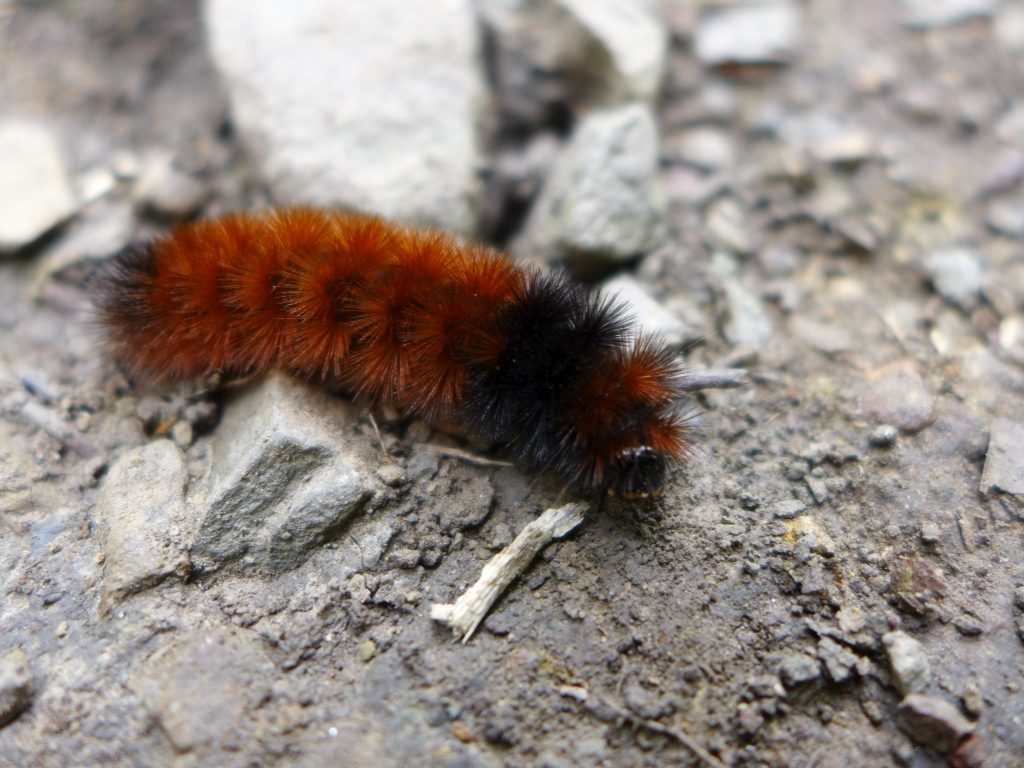
So many woolly bear caterpillars have crossed my path this fall that, fearing they’d be trampled, I have carefully moved each one across the trail.
“Woolly bears” are the larva form of a common North American moth, the Isabella tiger moth (Pyrrharctia isabella). Since she is not dependent on only one host plant, Isabella is found in many habitats.
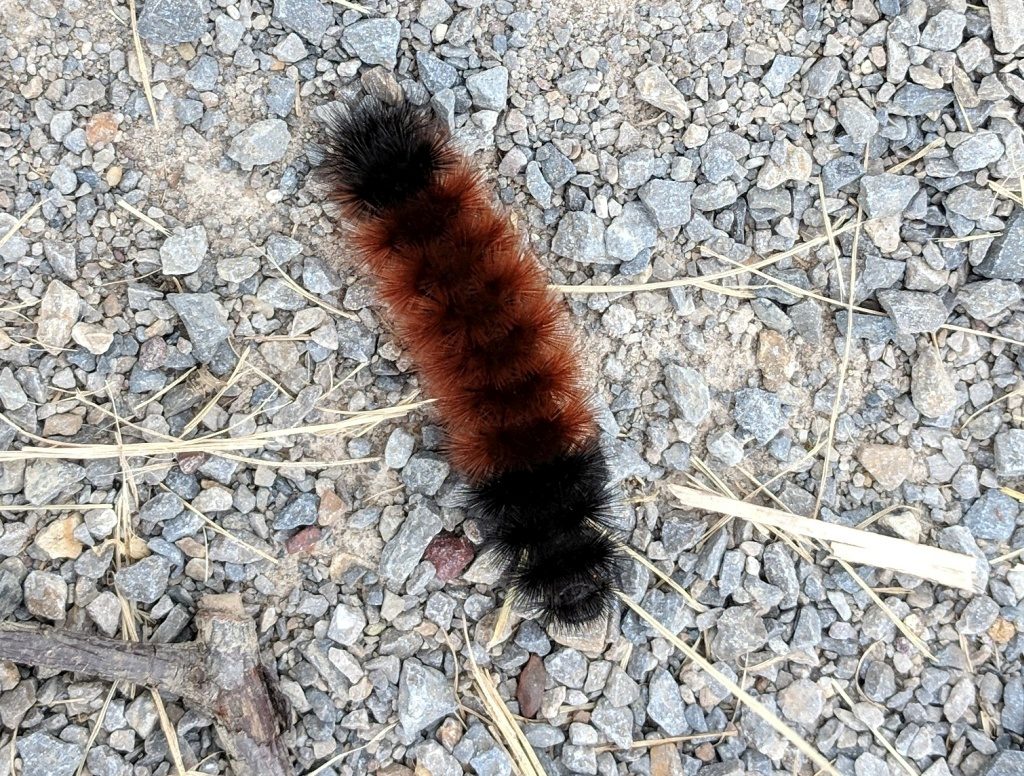
She even lives in the Arctic, surviving the winter because she has natural anti-freeze in her cells. Wikipedia describes how she does it:
The banded woolly bear larva emerges from the egg in the fall and overwinters in its caterpillar form when it literally freezes solid. First its heart stops beating, then its gut freezes, then its blood, followed by the rest of the body. It survives being frozen by producing a cryoprotectant in its tissues. In the spring it thaws.
— from Wikipedia: Pyrrharctia isabella
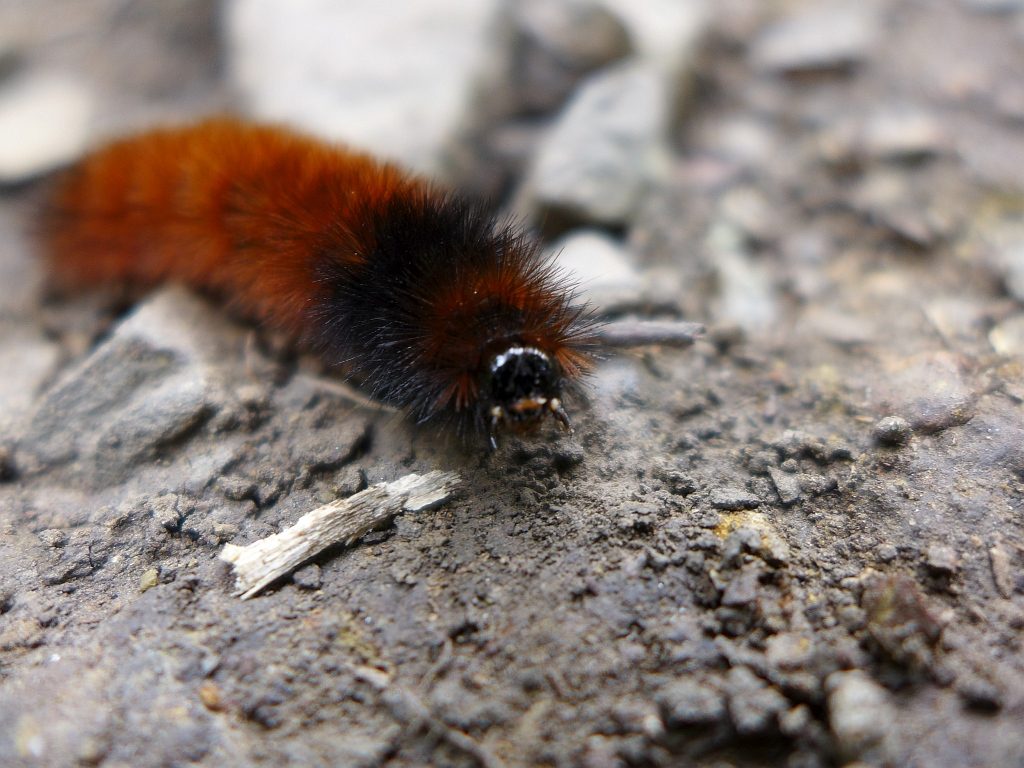
After she thaws in the spring, the woolly bear resumes eating, spins a cocoon, and becomes a flame-colored moth.
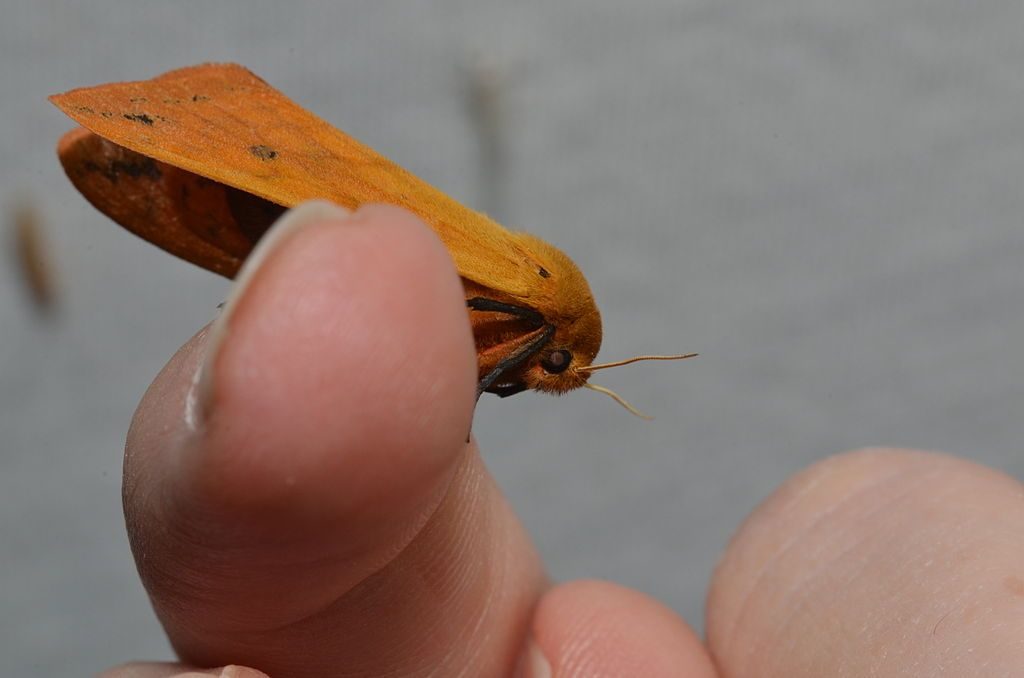
She’s rather large, but I don’t think I’ve ever seen her as an adult. Have you?
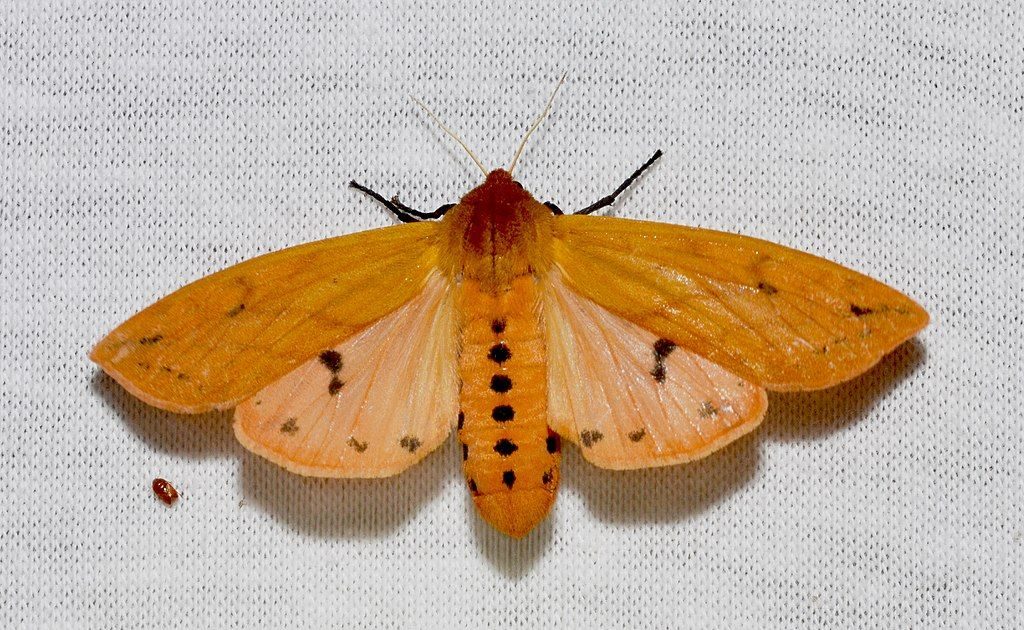
I only notice Isabella as she’s preparing for winter.
Read about woolly bears — and what their stripes mean — in this vintage article: Isabella Scoffs At Winter.
(photos of woolly bear caterpillars by Kate St. John, photos of adult moths from Wikimedia Commons; click on the captions to see the originals)
Huh, that is bizarre. I see woolly caterpillars all the time in the fall, but I’ve never seen the adult moth. Ever.
I also move woolly bears! But I also haven’t seen an adult, ever. 🙁
Aren’t these the moths that flit around lights at night?
Nan, I’m sure these moths flit around lights at night, as so do all moths. Clearly I haven’t spent much time looking at lights at night. 🙂
As kids, we thought they predicted the winter weather according to the width of their band.
This is a useful and very interesting website. Please continue it.